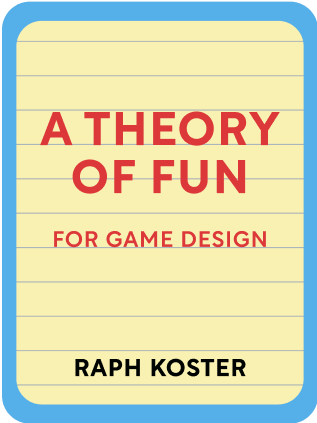

This article is an excerpt from the Shortform book guide to "A Theory of Fun for Game Design" by Raph Koster. Shortform has the world's best summaries and analyses of books you should be reading.
Like this article? Sign up for a free trial here .
What is A Theory of Fun for Game Design about? Can games be more than just a distraction from reality?
In his book A Theory of Fun for Game Design, Raph Koster discusses the theories behind games such as what makes a game fun, what games can teach, and how games can provide us with insight into ourselves. These are essential concepts to consider whether you’re making a board game or a video game.
Here is a brief overview of A Theory of Fun for Game Design.
A Theory of Fun
Humans play a wide variety of games, from basketball and chess to video games and poker. Why are we so enthralled with these games, even when they don’t really have an impact on our lives outside the game?
Theory of Fun for Game Design, by veteran game designer Raph Koster (lead designer of Ultima Online), discusses why games are fun, what games teach their players, and ultimately how to make a meaningful game.
Why Are Games Fun?
Most people play games to have fun. But what exactly is fun?
On a neurobiological level, fun is a boost of dopamine when we learn something or master a task. We are evolutionarily programmed to enjoy learning, just like we enjoy sex, because learning improved our chances of survival.
So why are games fun? Fun from games comes from learning, comprehension, and mastery.
Learning in games is different from learning in reality. Games present an environment where you can learn and have no pressure from consequence.
Games get boring when the player has learned the pattern, and there is nothing new to learn. They also get boring when they’re too trivial (you’ve mastered the pattern) or when they’re too difficult (you might not even identify the pattern).
What Do Games Teach?
So games are fun because they teach patterns. But what are these patterns? The author offers these:
- Calculation of odds, prediction of events
- This applies to any game involving probability, such as games where you roll a dice, Monopoly, dominoes, and card games.
- Social power and status
- Playing “house” with a group of kids is about jockeying for social status.
- Games involving force projection and territory control, like chess or Starcraft, are about social status as well.
- Spacial relationships— examining the environment
- In these games, you understand how the environment reacts to change, so that you can exercise power over it.
- This is true of Super Mario, chess, and sports games.
- Memory—recall and manage complex chains of information
- Counting cards in blackjack
- Visceral responses
- This includes shooting games, where you aim, shoot, and move in response to what’s on screen
- Teamwork
- This is true of games as wide-ranging from basketball to Counter-Strike.
These are universally helpful patterns to learn and have been helpful in evolutionary history. Consider how useful teamwork, memory, and social status were when humans were cavemen.
Many games we play today thus existed to train us to be better cavemen. But many skills we learn today are no longer immediately relevant, such as archery or running marathons.
The holy grail is a game that provides never-ending challenges, requires a wide range of skills to succeed, and has a difficulty curve that perfectly adjusts to your skill level over time. This is a lot like life.
Games Can Do More
We could use more games that teach relevant modern skills that might be counterintuitive and possibly against our nature.
For example, the game Simcity teaches large-scale network building and resource management, in ways that cavemen wouldn’t have needed to be concerned with.
The author suggests these counterintuitive behaviors that would be useful in the modern day:
- Avoiding xenophobia—empathizing with people not in our in-group
- Questioning obedience to leaders
- Resolving problems without the use of force
- Understanding complex relationships, such as how peace treaties affect oil prices
For games to be as venerated as other media, like literature and film, they need to provide us with insight into ourselves.
Consider the strategy game MULE, which is a multiplayer strategy game featuring economics. In this game, off-world colonists compete to be the richest. As a player, it’s possible to become the richest colonist, but the colony could still perish and so cause everyone to lose. The game therefore teaches the delicate interaction between individuals and society.
If games are to follow the pattern of history of how other media evolved, they’re certain to be taken seriously as art sometime in the future.

———End of Preview———
Like what you just read? Read the rest of the world's best book summary and analysis of Raph Koster's "A Theory of Fun for Game Design" at Shortform .
Here's what you'll find in our full A Theory of Fun for Game Design summary :
- What makes games fun
- Why it's important for games to have a learning component
- Whether or not games should be considered art






